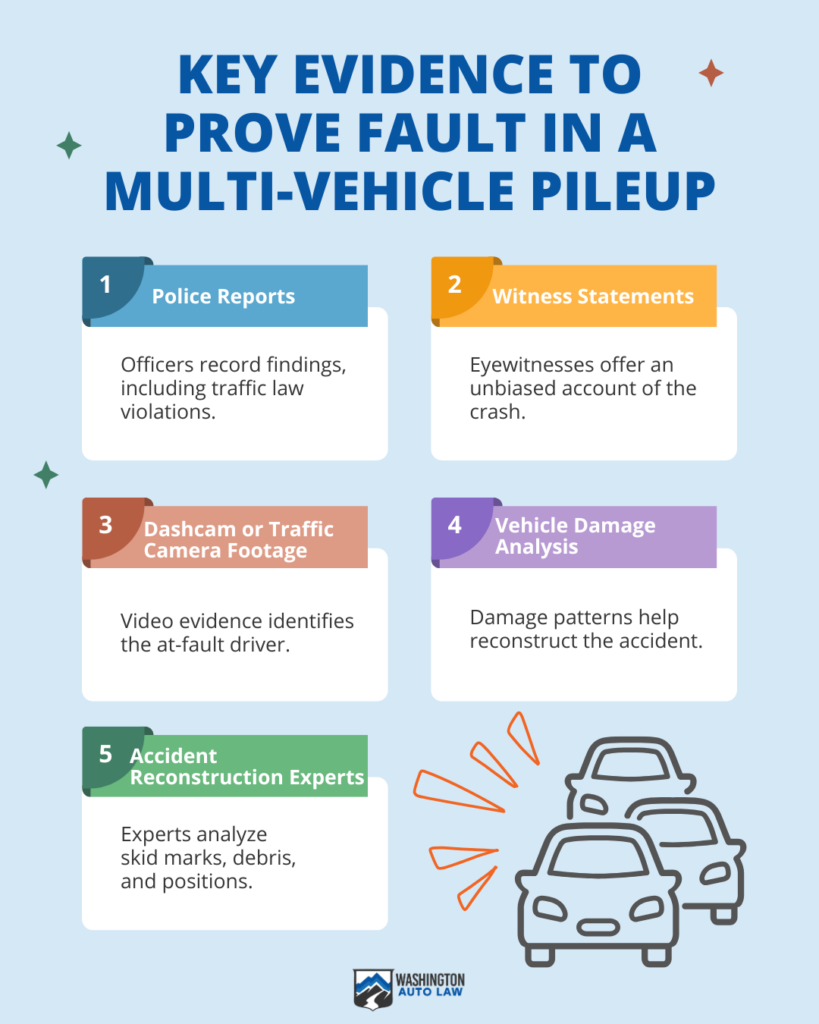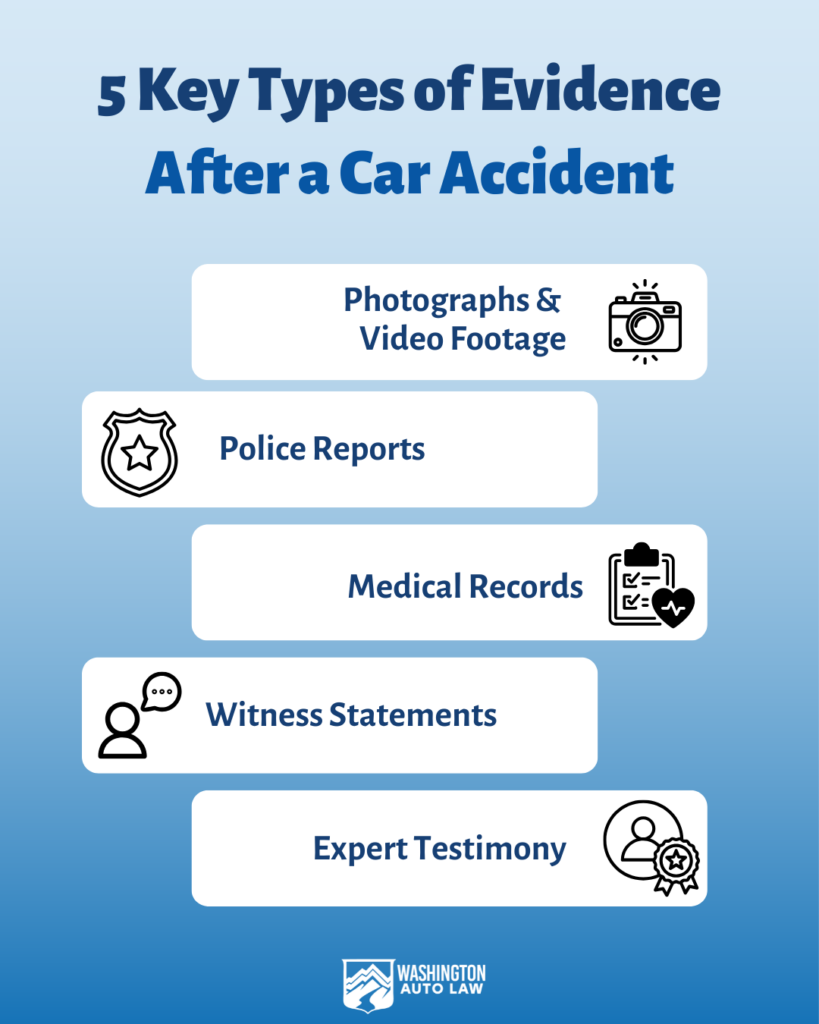Table of Contents
- Understanding Fault in Multi-Vehicle Pileups
- Key Evidence to Prove Fault
- Determining Liability in a Multi-Vehicle Accident
- Common Mistakes That Can Hurt Your Claim
- How a Personal Injury Attorney Can Help
- Contact Washington Auto Law for a Free Consultation
Multi-vehicle accidents, also known as pileups, are among the most complex car crashes to navigate in Washington State. With multiple drivers, conflicting accounts, and extensive damage, determining fault can be challenging. If you or a loved one has been injured in a multi-vehicle accident, knowing how to prove fault is critical to securing fair compensation. This guide breaks down the essential steps to building a strong injury claim.
Understanding Fault in Multi-Vehicle Pileups
In Washington, determining fault in a multi-vehicle pileup depends on several factors, including negligence, traffic laws, and accident reports. Since Washington follows a comparative negligence system, multiple parties may share liability, and your compensation could be affected if you’re found partially at fault.
Some common causes of multi-vehicle accidents include:
- Tailgating: When drivers follow too closely, they may not have enough time to stop, leading to chain-reaction crashes.
- Distracted Driving: Using a phone, eating, or adjusting controls can lead to delayed reactions.
- Speeding and Reckless Driving: High speeds reduce reaction times and increase the severity of accidents.
- Weather Conditions: Fog, rain, and ice can make highways treacherous, increasing the likelihood of pileups.
Understanding what caused the crash is the first step in proving fault and determining liability.
Key Evidence to Prove Fault
To establish fault in a multi-vehicle pileup, you must gather strong evidence to support your claim. This includes:
- Police Reports: Officers investigating the crash will document their findings, including potential violations of traffic laws.
- Witness Statements: Eyewitnesses can provide an unbiased perspective on how the accident unfolded.
- Dashcam or Traffic Camera Footage: Video evidence can help pinpoint which driver triggered the collision.
- Vehicle Damage Analysis: The placement and severity of damage on each vehicle can help reconstruct how the accident occurred.
- Accident Reconstruction Experts: Professionals can analyze skid marks, debris, and vehicle positions to determine the sequence of events.

Since insurance companies will attempt to minimize their payouts, having well-documented evidence is crucial to proving your case.
Determining Liability in a Multi-Vehicle Accident
Assigning liability in a multi-car accident involves examining each driver’s actions leading up to the crash. Some of the key factors include:
- The Initial Impact: The driver who caused the first collision may bear the most responsibility.
- Chain-Reaction Effects: Secondary collisions often happen because of an initial crash, but other drivers may still be partially at fault.
- Traffic Violations: Running a red light, speeding, or distracted driving can indicate negligence.
- Sudden Stops and Unsafe Lane Changes: If a driver made an abrupt move without signaling, they could share responsibility.
Insurance adjusters and legal professionals will review all available evidence to determine how much fault each driver holds.
Common Mistakes That Can Hurt Your Claim
After a multi-vehicle accident, making certain mistakes can significantly impact your claim. Avoid the following errors:
- Not Seeking Immediate Medical Attention: Delaying medical care can make it harder to link injuries to the accident.
- Admitting Fault at the Scene: Even a simple apology can be used against you by insurance companies.
- Not Collecting Evidence: Failing to take photos, get witness information, or secure a police report can weaken your case.
- Speaking to Insurance Adjusters Without Legal Advice: Insurance companies may twist your statements to reduce or deny your claim.
Taking the right steps early on will help protect your rights and strengthen your case.

How a Personal Injury Attorney Can Help
Due to the complexity of multi-vehicle accident claims, having an experienced attorney can make a significant difference. A personal injury lawyer can:
- Investigate the Accident: Gather and analyze evidence to determine fault.
- Negotiate with Insurance Companies: Ensure you receive a fair settlement.
- Handle Legal Procedures: Navigate the claims process and meet deadlines.
- Represent You in Court if Needed: Fight for your rights if your case goes to trial.
Insurance companies often try to minimize their payouts in multi-vehicle accidents, making legal representation essential for maximizing compensation.
Contact Washington Auto Law for a Free Consultation
Proving fault in a multi-vehicle pileup requires extensive evidence and legal expertise. If you’ve been injured in a pileup in Washington, don’t navigate the claims process alone. Contact Washington Auto Law today for a free consultation. Our experienced attorneys will fight to get you the compensation you deserve.
Call us at 206-497-4357 or schedule your free consultation online to protect your rights and financial future.


